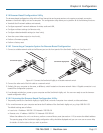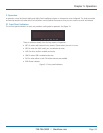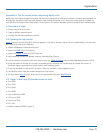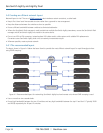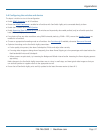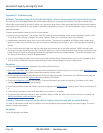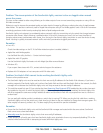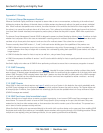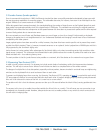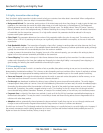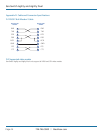
Appendices
724-746-5500 | blackbox.com
Page 41
C.2 Jumbo frames (Jumbo packets)
Since its commercial introduction in 1980, the Ethernet standard has been successfully extended and adapted to keep pace with
the ever improving capabilities of computer systems. The achievable data rates, for instance, have risen in ten-fold leaps from the
original 10Mbit/s to a current maximum of 100Gbit/s.
While data speeds have increased massively, the standard defining the number of bytes (known as the Payload) placed into each
data packet has remained resolutely stuck at its original level of 1500 bytes. This standard was set during the original speed era
(10Mbits/s) and offered the best compromise at that speed between the time taken to process each packet and the time required
to resend faulty packets due to transmission errors.
But now networks are much faster and files/data streams are much larger; so time for a change? Unfortunately, a wholesale
change to the packet size is not straightforward as it is a fundamental standard and changing it would mean a loss of backward
compatibility with older systems.
Larger payload options have been around for a while, however, they have often been vendor specific and at present they remain
outsidetheofficialstandard.Thereis,however,increasedconsensusonanoptional‘Jumbo’payloadsizeof9000bytesandthisis
fully supported by the ServSwitch Agility units.
Jumboframes(orJumbopackets)offeradvantagesforServSwitchAgilityunitswhentransmittingcertainhighresolutionvideo
signals across a network. This is because the increased data in each packet reduces the number of packets that need to be trans-
ferred and dealt with - thus reducing latency times.
The main problem is that for jumbo frames to be possible on a network, all of the devices on the network must support them.
C.3 Spanning Tree Protocol (STP)
In order to build a robust network, it is necessary to include certain levels of redundancy within the interconnections between
switches. This will help to ensure that a failure of one link does not lead to a complete failure of the whole network.
The danger of multiple links is that data packets, especially multicast packets, become involved in continual loops as neighbouring
switches use the duplicated links to send and resend them to each other.
To prevent such bridging loops from occurring, the Spanning Tree Protocol (STP), operating at layer 2, is used within each switch.
STP encourages all switches to communicate and learn about each other. It prevents bridging loops by blocking newly discovered
links until it can discover the nature of the link: is it a new host or a new switch?
The problem with this is that the discovery process can take up to 50 seconds before the block is lifted, causing problematic time-
outs.
The answer to this issue is to enable the portfast variable for all host links on a switch. This will cause any new connection to go
immediately into forwarding mode. However, take particular care not to enable portfast on any switch to switch connections as
this will result in bridging loops.



